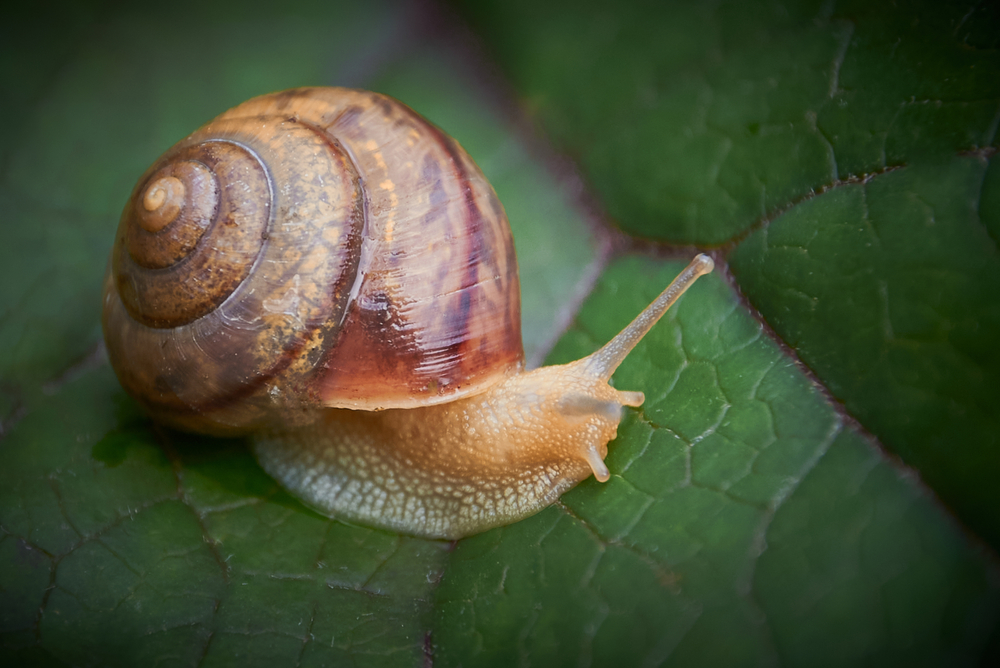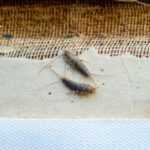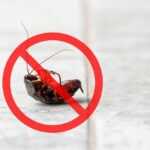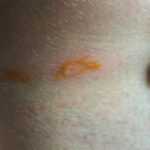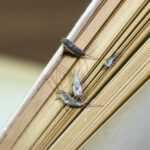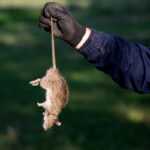Effective Garden Snail Control: Best Practices for Your Backyard
The common garden snail (Cornu aspersum), also known as the brown garden snail, and other garden snails are among the most notorious brown and grey snails that damage gardens by creating leaf holes and destroying seedlings. This comprehensive guide will help you identify garden snails, understand their behavior, and apply practical methods to manage them effectively, protecting your garden plants from these destructive garden pests.
- Successful garden snail management involves understanding their biology and life cycle, particularly since these snails mate as hermaphrodites possessing both male and female reproductive organs.
- Implementing a four-step process involving cultural practices, biological controls, organic methods, and chemical treatments leads to significant reductions in garden snail populations, safeguarding citrus groves, gardens, and agricultural fields.
- Although garden snails are agricultural and garden pests, they also serve as a food delicacy in various cultures and have applications in the cosmetic industry, reflecting their complex role in nature and human society.
Understanding Garden Snails
Brown garden snails (Cornu aspersum), also known as Helix aspersa, are terrestrial gastropods easily recognized by their distinct brown and grey shells with yellow stripes. These land snails move with a characteristic gliding motion using their muscular foot, which secretes mucus to aid movement and reduce friction. They are primarily nocturnal, active at night and early morning, while seeking cool, moist shelter during the day to avoid drying out.
Garden snails consume a wide variety of plant matter, including leaves, flowers, and decaying organic matter. Their dietary flexibility allows them to thrive in diverse environments such as gardens, parks, citrus groves, and agricultural lands. Understanding their habits is essential for effective control and prevention.
Identification of Garden Snails
Effective garden snail control begins with proper identification. These snails have large, globose, thin, and glossy shells with fine wrinkles and spiral bands. The shell coloration varies from light brown to dark brown and grey, often featuring yellow stripes and flecks. The aperture is roundly lunate to ovate-lunate with a backward-turned lip, a distinctive feature for identification.
The brown and grey snails’ unique shell patterns make them distinguishable from other species, aiding gardeners in early detection and prompt management.
Life Cycle of Garden Snails
Garden snails exhibit a fascinating life cycle marked by several developmental stages. As hermaphrodites, most snails mate with another snail, though self-fertilization is possible.
These snails become active in early summer after emerging from hibernation during colder months. Their reproductive process involves a courtship period lasting 4 to 12 hours, during which they use a “love dart” as part of their mating ritual.
Reproduction Process
Mating occurs primarily in early summer. After fertilization, snails lay eggs in shallow soil pits approximately 1 to 1.5 inches deep, usually 3 to 6 days post-mating. Each clutch contains about 30 to 120 eggs, enabling rapid population growth.
Growth and Development
Eggs hatch within two weeks during warm, moist conditions. Hatchlings have delicate, translucent shells that harden as they reach maturity. Depending on environmental factors such as moisture and temperature, snails reach sexual maturity in one to two years, which is crucial for timing control interventions.
Impact on Gardens
Garden snails are two destructive garden pests causing significant damage by feeding on leaves, fruits, flowers, and young tree bark. Their feeding results in irregular holes with smooth edges on leaves and circular chewed areas on fruit rinds, affecting citrus trees, vegetable crops, garden flowers, and grain plants.
The damage caused by these pests highlights the importance of effective garden snail control to protect valuable plants and maintain healthy gardens and agricultural productivity.
Natural Predators of Garden Snails
Several natural predators help regulate garden snail populations. Birds such as thrushes, crows, and especially ducks actively eat garden snails. Mammals like hedgehogs and rats also contribute to controlling snail numbers.
Predatory insects and ground beetles consume snails and their eggs, while amphibians like frogs and toads include snails in their diet. Encouraging these natural predators supports biological control and reduces reliance on chemical methods.
Effective Management Strategies
Managing garden snails involves a four-step process that includes cultural, biological, chemical, and organic control methods.
Cultural Controls
Cultural practices involve habitat modification to deter snails:
- Remove weeds and debris such as boards, bags, and brush that provide hiding places.
- Prune tree skirts 24 to 30 inches above the ground to reduce snail habitats, an important step that involves pruning tree skirts to prevent snail access.
- Apply banding tree trunks with copper foil or a basic copper sulfate slurry to prevent snails from climbing.
- Maintain garden cleanliness to reduce moisture and organic matter that attract snails.
Using a board placed on the ground at night, elevated by four stones, provides shelter for snails. In the morning, collect the snails and dispose of them by dropping them into a jar filled with water and a little rubbing alcohol to ensure humane and effective removal.
Biological Controls
Biological control involves making releases of the predatory decollate snail (Rumina decollata), which preys on brown garden snails. Ground beetles and predatory insects also help reduce snail populations.
Ducks are particularly effective natural predators that can be introduced to gardens for snail control.
Chemical Controls
Chemical methods include the use of poison bait, applied carefully to minimize impact on non-target species. Copper tape and diatomaceous earth serve as barriers that prevent snail movement, though diatomaceous earth requires reapplication after rain.
Organic Methods for Snail Control
Organic approaches include handpicking snails during their active periods and using shallow dishes filled with beer placed slightly below ground level to trap and drown snails.
Natural barriers made from coffee grounds, crushed eggshells, and seashells repel snails and protect plants without chemicals.
Preventing Snail Infestations
Preventive measures are essential to avoid snail infestations:
- Prune plants to increase sunlight and reduce moisture.
- Use snail-resistant plants with thick or aromatic foliage as natural barriers.
- Comply with quarantine regulations in states like South Carolina and Arizona to prevent the spread of snails.
- Avoid taking potentially infested materials such as compost or mulch from unverified sources, and be cautious when transporting plant materials brought from other regions.
- Check with your state’s department of natural resources before transporting plant materials to prevent introducing snails.
- Monitor garden areas regularly, especially after rain or irrigation, since snails thrive in moist, ideal environments.
Edible Uses and Benefits
Garden snails, especially in countries like Portugal, are considered a food delicacy. Their eggs, known as ‘white caviar,’ are luxury food items prized for their unique flavor.
Additionally, garden snail mucus is valued in the cosmetic industry for its regenerative properties, highlighting the dual role of these creatures as pests and beneficial resources.
Additional Tips for Garden Snail Control
- Install physical barriers such as copper tape around raised beds and pots to deter snails.
- Use beer traps in shallow dishes placed near damaged plants to attract and drown snails effectively.
- Encourage the presence of native predators by providing habitats such as birdhouses and ground cover.
- Regularly inspect plants and soil for eggs and young snails to intervene early.
- Avoid excessive watering or over-irrigation to reduce the moist conditions preferred by garden snails.
- Collect snails manually during damp evenings or early mornings when they are most active, especially in regions like Southern California and San Diego, where garden snails are common.
Effective garden snail control requires a combination of accurate identification, understanding of their biology, and integrated management strategies, including cultural, biological, chemical, and organic methods. These approaches will help protect your garden from destructive pest damage and maintain a healthy, thriving outdoor environment.
Frequently Asked Questions
What constitutes the most efficient methods for garden snail control?
The most efficient garden snail control involves a four-step process: cultural practices such as pruning tree skirts and banding tree trunks, biological controls using natural predators like decollate snails and ducks, organic methods including handpicking and beer traps, and careful use of chemical controls when necessary. Combining these strategies yields the best results.
How do I identify a brown garden snail?
Brown garden snails have large, globose shells with distinct brown and grey coloration, often featuring yellow stripes and flecks. The shell aperture is roundly lunate to ovate-lunate with a backward-turned lip, making them distinguishable from other snails.
What plants are most affected by garden snails?
Citrus trees, vegetable crops, garden flowers, and grain plants are most vulnerable to damage from garden snails. Protecting these plants is essential to prevent significant agricultural and garden losses.
Can garden snails be beneficial?
Yes, garden snails serve as a food delicacy in various cultures and their mucus is used in cosmetics for its regenerative qualities, demonstrating beneficial uses alongside their pest status.
Are there organic methods to control garden snails?
Organic control methods include handpicking snails, using beer traps in shallow dishes, and creating natural barriers with coffee grounds, eggshells, and seashells. These methods are environmentally friendly and effective for managing snail populations.
